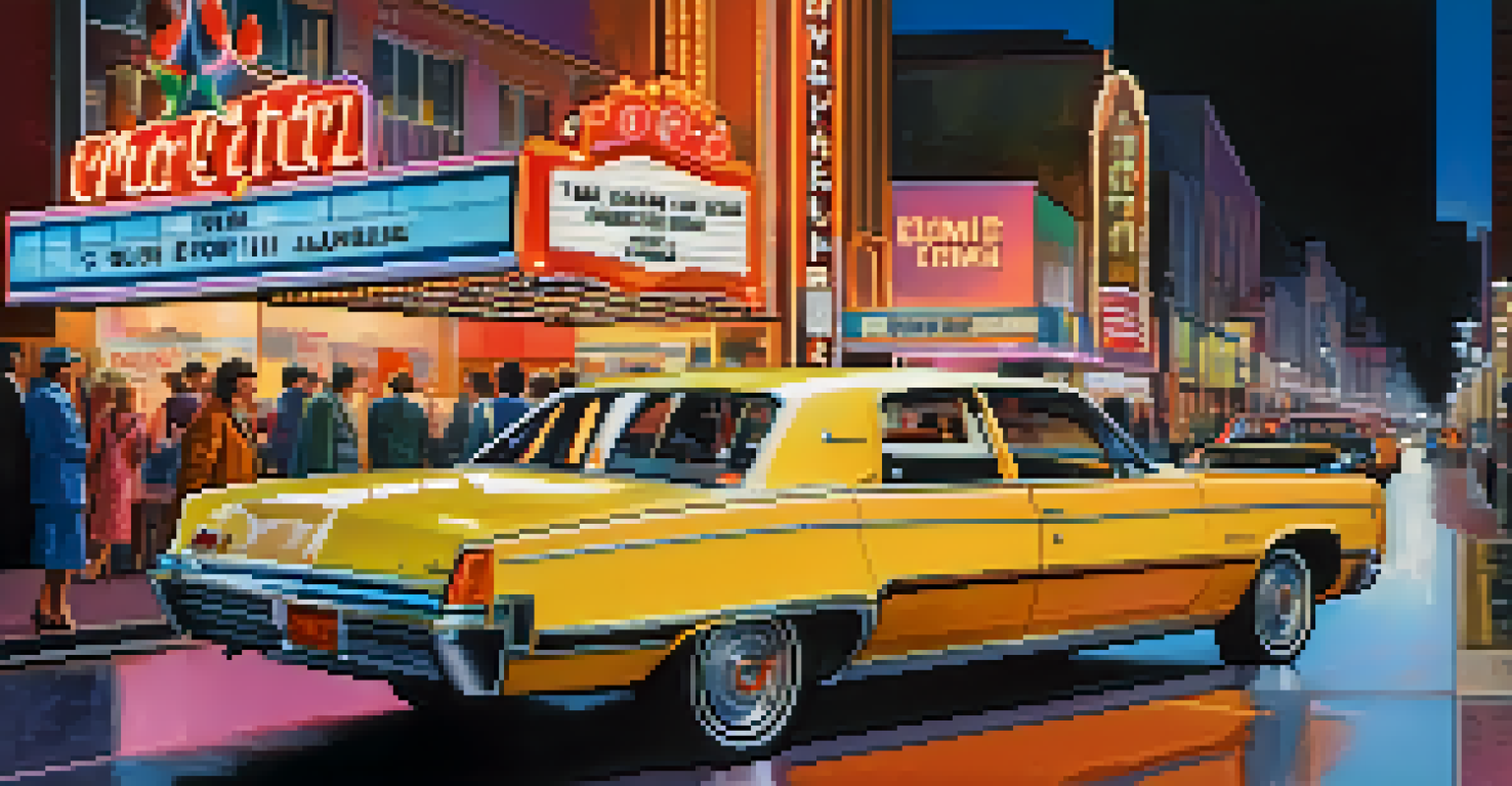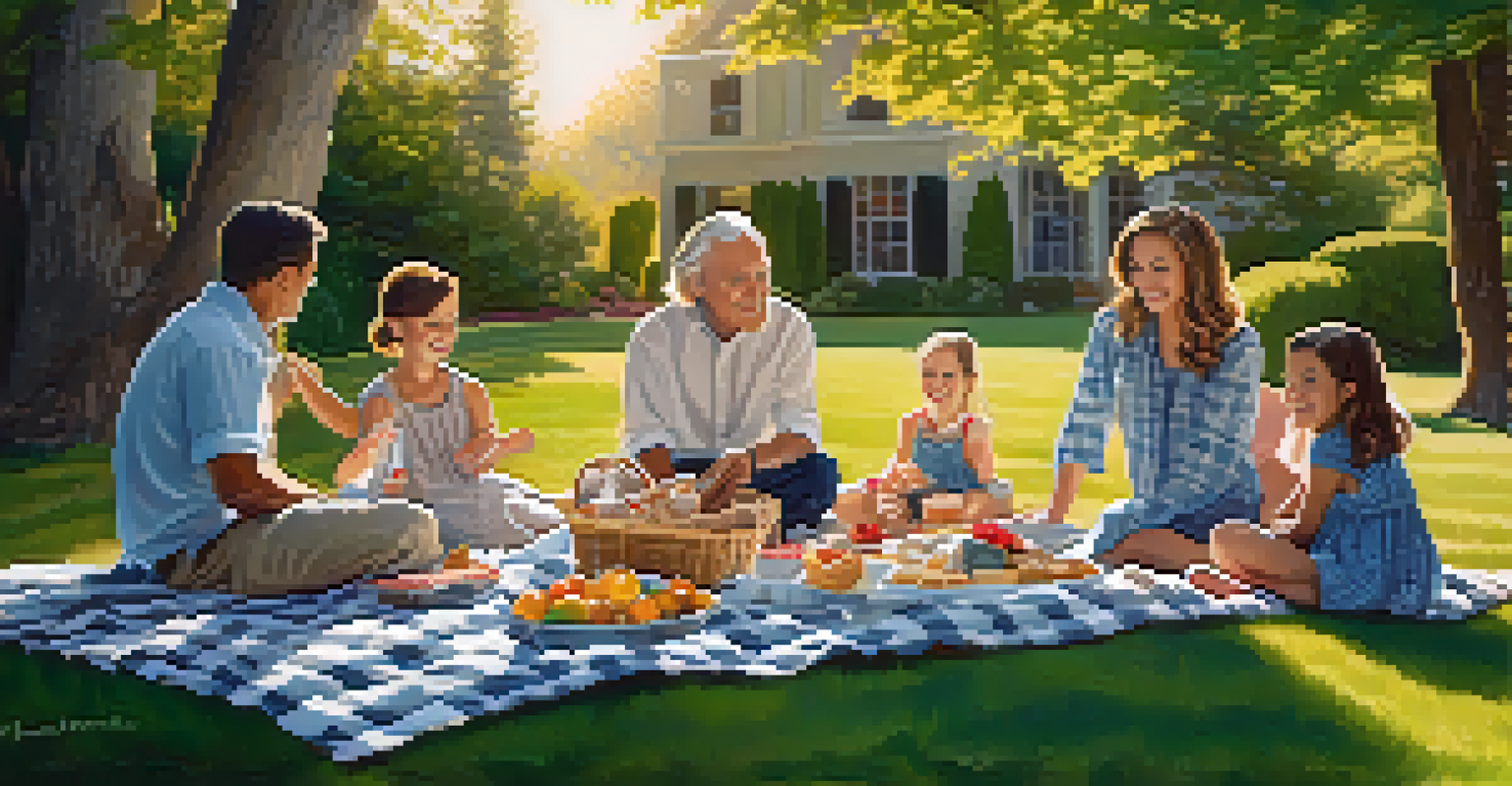The Role of Nostalgia in Films Targeting Older Viewers

Understanding Nostalgia: A Powerful Emotion
Nostalgia is a complex emotion that often evokes feelings of longing for the past. For many older viewers, it connects them to cherished memories and experiences from their youth. This emotional resonance can significantly enhance their viewing experience, making films that tap into nostalgia particularly appealing.
Nostalgia is a file that removes the rough edges from the good old days.
When filmmakers incorporate nostalgic elements, they create a bridge between the past and present. This can be achieved through familiar settings, music, or character archetypes that resonate with older audiences. Such elements not only draw viewers in but also provide a comforting sense of familiarity and belonging.
Ultimately, nostalgia serves as a powerful tool in storytelling, allowing filmmakers to evoke emotions that can lead to a deeper connection with the audience. By understanding this, creators can effectively tailor their films to resonate with older viewers in meaningful ways.
Nostalgia in Film: A Trip Down Memory Lane
Films targeting older audiences often showcase themes and aesthetics reminiscent of earlier decades. This approach not only creates a sense of nostalgia but also allows viewers to relive moments from their formative years. Movies like 'The Irishman' and 'Once Upon a Time in Hollywood' serve as prime examples of this trend.

These films frequently feature iconic music, fashion, and cultural references that instantly transport viewers back in time. By doing so, they tap into shared cultural touchstones, making the viewing experience more relatable and engaging. Such elements remind audiences of the emotions and experiences they once cherished.
Nostalgia Enhances Emotional Connection
Nostalgia in films evokes cherished memories, creating deeper emotional connections for older audiences.
Moreover, this nostalgic approach can spark conversations among viewers, as they reminisce about the past and share stories with one another. This communal aspect of nostalgia enhances the enjoyment of the film and fosters connections among older viewers.
The Role of Familiarity in Engaging Storytelling
Familiarity plays a crucial role in how older audiences engage with films. When viewers recognize elements from their past, it creates a sense of comfort and reassurance. This familiarity can be particularly important for older audiences, who may appreciate narratives that feel safe and predictable.
Nostalgia is like a grammar lesson. You find the present tense, but the past perfect.
Films that incorporate familiar tropes or revisit beloved characters often find success with older viewers. For instance, sequels and reboots of classic films can evoke excitement while allowing audiences to reconnect with cherished stories. This strategy not only attracts viewers but also ensures their loyalty.
Additionally, familiarity can also be used to address contemporary issues through a nostalgic lens. By framing modern challenges within familiar contexts, filmmakers can make complex themes more accessible to older audiences.
Nostalgia and Emotional Engagement in Storylines
Emotionally charged storylines resonate deeply with older viewers, especially when they evoke nostalgia. Films that explore themes of love, loss, and family ties often strike a chord, reminding audiences of their own life experiences. This emotional engagement can lead to a more impactful viewing experience.
For instance, films that center around family gatherings or reunions can evoke bittersweet memories for older viewers. This not only enhances the emotional depth of the film but also fosters connections between the characters and the audience. The shared experience of nostalgia makes the story more relatable and compelling.
Familiarity Engages Older Viewers
Familiar elements in storytelling provide comfort and reassurance, making films more relatable for older viewers.
Moreover, filmmakers who skillfully weave nostalgic elements into their narratives often find success in capturing the hearts of older audiences. This emotional resonance can lead to discussions about personal memories, further enhancing the film's impact.
The Influence of Music in Evoking Nostalgia
Music is a powerful tool that can evoke nostalgia more than any other element in films. For older viewers, familiar songs from their youth can transport them back to specific moments in time, enhancing their overall viewing experience. Soundtracks that feature classic hits can create an immediate emotional connection.
Incorporating recognizable music can also serve as a storytelling device, enhancing the narrative while igniting memories. For example, a scene set in the 1970s featuring popular songs from that era can evoke a sense of nostalgia and authenticity. This connection through music reinforces the themes and emotions present in the film.
Furthermore, soundtracks can often become a character in their own right, influencing how viewers feel about the narrative. A well-curated soundtrack can leave a lasting impression and prompt older audiences to revisit their own memories tied to those songs.
Nostalgia and Cultural Representation in Films
Cultural representation in films plays a significant role in how older audiences relate to nostalgic themes. Many viewers feel a strong connection to films that reflect their cultural backgrounds or experiences. This representation not only validates their identity but also enhances the nostalgic experience.
For instance, films that depict cultural milestones or significant historical events can evoke nostalgia for shared experiences within specific communities. When audiences see their stories represented on screen, it fosters a sense of pride and belonging that resonates deeply.
Cultural Representation Matters
Films that reflect cultural backgrounds resonate more deeply with older audiences, fostering a sense of pride and belonging.
Moreover, this cultural representation can serve as a reminder of the progress made over the years, encouraging reflection on personal and collective journeys. By tapping into these cultural narratives, filmmakers can create films that resonate not just on an emotional level but also on a cultural one.
The Future of Nostalgia in Cinema for Older Viewers
As cinema continues to evolve, the role of nostalgia is likely to become even more pronounced in films targeting older audiences. With the rise of streaming platforms and a growing demand for diverse stories, filmmakers have new opportunities to explore nostalgic themes. This allows for innovative storytelling that honors the past while addressing contemporary issues.
Moreover, as younger generations grow older, their nostalgic experiences will also shape the content produced in the future. Filmmakers may begin to draw from the cultural references and trends that resonate with today's older audiences, creating a rich tapestry of nostalgia across various genres.

Ultimately, the blend of nostalgia with modern storytelling techniques can lead to films that not only entertain but also foster connections across generations. As the film industry adapts to changing viewer preferences, nostalgia will remain a vital element in engaging older audiences.